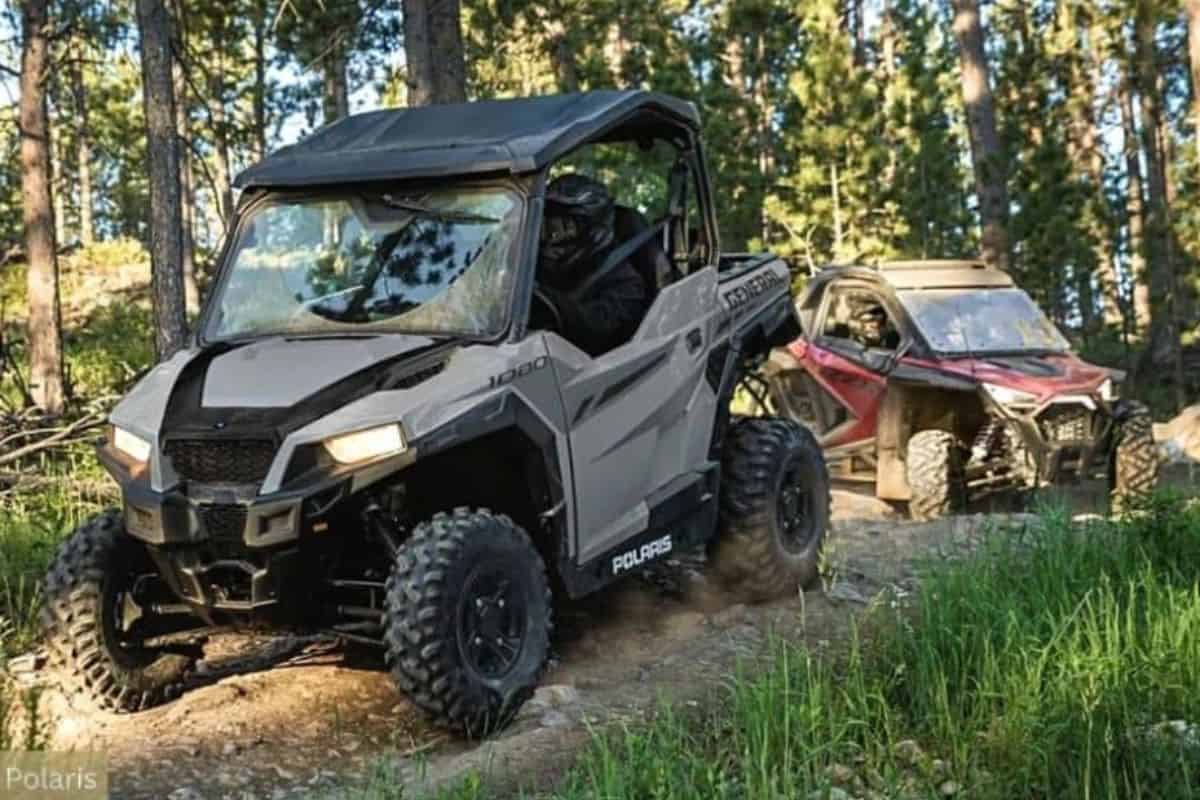Whether you’re looking to get work done around your property or tear up the trails, UTVs offer rugged performance and versatility.
As the UTV market has grown, however, side-by-side options have continued to expand, as there are now 26 different UTV manufacturers producing machines.
Not all UTVs are created equal though.
For example, a question that first-time powersport owners often have is whether all UTVs are 4×4.
The answer might surprise some newcomers.
While early UTV models leaned heavily towards more capable 4-wheel drive systems, ongoing product development has delivered more diversity in drivetrain configurations for side-by-sides.
And now riders can choose from either more affordable 2-wheel drive models or more capable 4×4 models, depending on their needs and budget.
So how can you determine whether 2WD or 4WD best suits your needs?
To answer this question, we wrote this blog post to break down the key differences every UTV owner should know, including:
- What exactly is the difference between 2WD vs 4WD UTVs?
- Which major UTV/side-by-side models offer 2WD or 4WD?
- What are the pros and cons of choosing 2-wheel drive over 4-wheel drive (and vice versa)?
- When does opting for 2WD make the most sense?
Key Takeaways
- UTVs come in both 2WD and 4WD configurations, catering to different needs and budgets, however, most side-by-sides offer four-wheel drive capability.
- While 4WD models offer enhanced traction and off-road capability, 2WD variants are more cost-effective and efficient for flatter, smoother terrains.
- The choice between 2WD and 4WD should be based on the intended use. 2WD is ideal for flat terrain and property work, while 4WD is necessary for off-road adventures, climbing, and more technical terrains.
Are All UTVs 4×4?
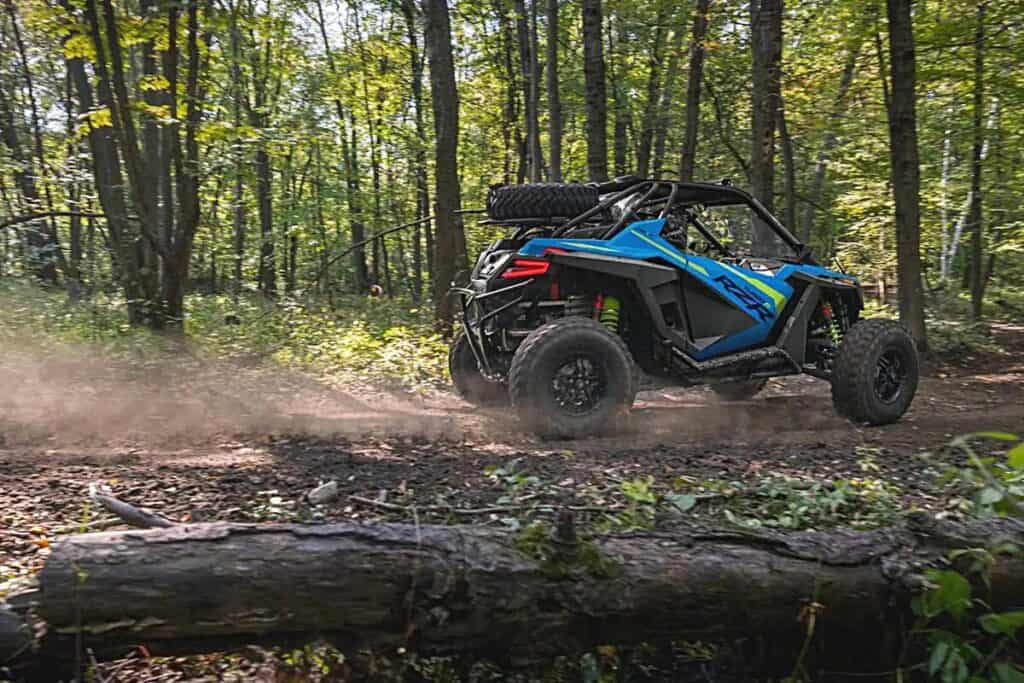
Not all UTVs feature a 4-wheel drive system. As some models offer buyers just two-wheel drive capability.
Typically, 4WD UTVs command a higher price tag than their 2WD counterparts.
So what exactly sets 2WD and 4WD UTVs apart?
4WD leverages both front and rear differentials to divide engine torque between all four wheels. This allows power delivery to each wheel individually as needed for maximum traction.
In contrast, 2WD UTVs only channel engine torque to either the rear or front set of wheels (typically rear) using a single differential.
What’s the Difference Between 2WD & 4WD UTVs
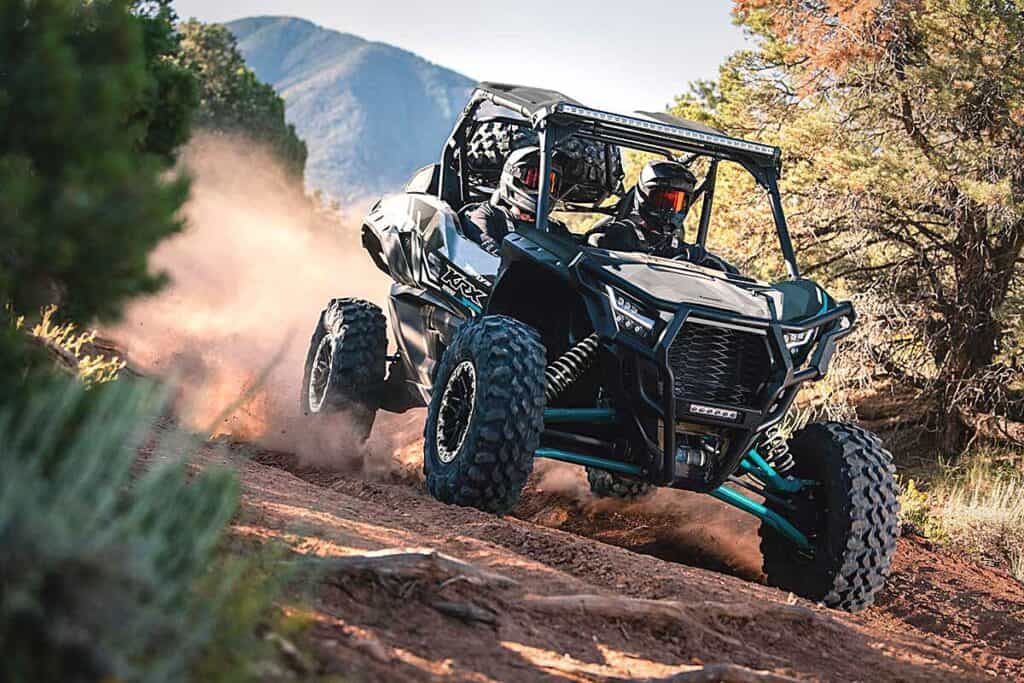
At the most basic level, 4WD UTVs deliver engine power to all four wheels—front and back. 2WD models on the other hand only drive two wheels—typically the rear two.
But there’s more to it than this.
As modern UTVs finely tune power distribution for optimal grip via front and rear differentials.
Understanding differentials helps explain the core capabilities that 2WD and 4WD UTV configurations unlock, so let’s take a closer look at UTV differentials.
UTV Differentials
Differentials let each powered wheel spin independently, which allows the UTV drivetrain to adapt as wheels encounter varied terrain and surfaces.
Differentials become more critical as UTVs tackle trickier obstacles requiring more grip and finesse between wheels to keep advancing forward.
In 4WD UTVs, one differential sits on both the front and rear axles, splitting torque between the two to improve off-road capability.
On the flip side, 2WD UTVs feature just a single differential, with only one set of powered wheels.
Because of this, traction, grip, and progress over rough terrain suffer without the ability to spread torque across four contact points with the ground.
Drivetrain Hardware
Drilling deeper into side-by-side drivetrains, 4WD UTVs also offer larger front drive shafts, gears, and chains to angle extra power up front.
These heavy-duty components raise costs over straightforward 2WD rear axle setups requiring no additional drivetrain hardware.
But the payoff comes with a much greater capability to conquer a wider range of riding environments.
Which Popular UTV Models Are 2WD or 4WD
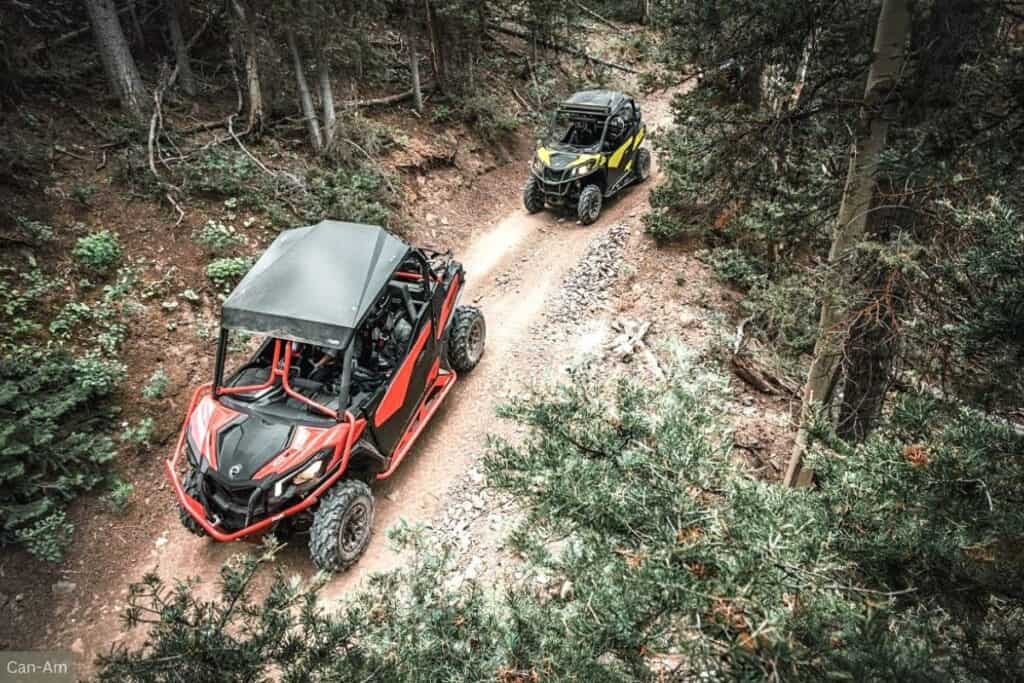
UTV buyers today face no shortage of rugged side-by-side options built for work and/or play.
Across the top UTV models, most offer selectable two-wheel/four-wheel drive systems providing the best of both worlds.
However, there are smaller more affordable options that only offer two-wheel drive capability.
So let’s take a look at today’s most popular UTV makes and models, to see which ones offer two-wheel drive and four-wheel drive systems.
Two-Wheel Drive UTVs
- Kawasaki Mule SX
- Kawasaki Mule 4000
- Landmaster L3 – 4×2
- Toro Workman GTX Utility Vehicle
- John Deere Gator TX 4×2
- Hisun Motors Sector 250
- Hisun Motors Strike 250R
- Polaris Ranger 150 EFI (Youth)
Two-Wheel/Four-Wheel Drive UTVs
- Polaris RZR Trail Sport
- Can-Am Defender DPS
- Polaris RZR XP 4 1000 Ultimate
- Can-Am Maverick X3 DS Turbo
- Polaris RZR Turbo R Sport
- Polaris Ranger Crew SP 570
- Honda Pioneer 500
- Kawasaki Mule Pro-MX
- Honda Talon 1000R
- Kawasaki Teryx KRX 1000
- Arctic Cat Prowler Pro XT
- Yamaha Viking VI EPS
- CFMoto UFORCE 600
- Yamaha YXZ1000R SS XT-R
- John Deere Gator XUV560E
- Kubota RTV520
Pros & Cons of 2WD vs 4WD Side-by-Sides
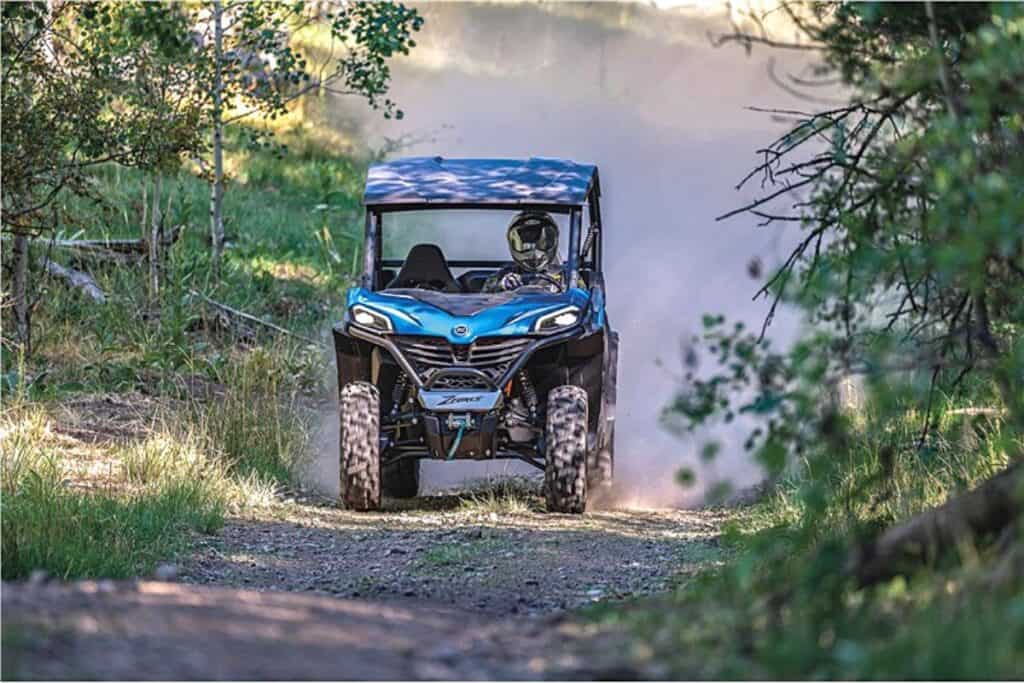
If you’re shopping for a UTV one of the key factors to consider is the drivetrain the machine offers, which is usually either a 2WD or a 2WD/4WD final drive.
While the vast majority of side-by-side buyers should go with a 2WD/4WD system, there are some scenarios where it might make more sense to choose a 2WD UTV.
Regardless of which drivetrain you end up choosing though, it’s still important to understand the advantages and disadvantages of each so that you can make a more informed decision.
So let’s take a look at the pros and cons of each UTV drivetrain.
2WD UTV Pros
- Lower upfront cost
- Less likely to damage turf or grass
- Better fuel efficiency
- Less maintenance without front differential
- Ideal for flatter, smoother terrain
2WD UTV Cons
- Less traction on steep, loose, wet terrain
- More limited climbing capability
- Higher risk of getting stuck off-road
4WD UTV Pros
- Maximum traction and control off-road
- Can tackle very steep, slippery terrain
- Great maneuverability at slow speeds
- Better traction for towing
4WD UTV Cons
- Higher cost
- Reduced fuel efficiency
- Increased maintenance requirements
- Unnecessary for casual riding or work
As the lists show, choosing between 2WD or 4WD depends largely on your intended use case, as 2WD UTVs delivers on affordability and efficiency for flatter utility purposes.
While 4WD UTVs dominates technical climbs and off-road exploration off-the-beaten path.
When Should You Use 2WD or 4WD on a UTV?
Now that we’ve highlighted the strengths and weaknesses of 2WD and 4WD systems, let’s take a look at when it makes the most sense to use each drivetrain.
Choose 2WD For:
- Farming, ranching, or land property needs
- Routine trail riding on flat ground
- Transport duties on rolling meadows/woods
- Youth riders not tackling technical climbs
Choose 4WD For:
- Advanced off-road trail exploration
- Extreme rock climbing or hills
- Mudding, dunes, or desert terrain
- High-adrenaline recreation like racing
As a rule of thumb, opt for 4WD if your adventures will encounter loose surfaces, steep grades beyond 15°, or uneven terrain like rocks requiring more finesse.
Go with 2WD if you plan to ride mostly on flat solid surfaces or if you want to protect the ground you’re riding on.
Got Questions? We’ve Got Answers…
Recent Posts
In recent years, off-road enthusiasts have been taking their adventures to the next level by installing UTV underglow lights on their side-by-sides. Which adds a unique visual appeal and improves...
Side by sides, also known as UTVs, are used by a wide range of outdoor enthusiasts from off-roaders to farmers to ranchers, and hunters. As these versatile machines offer a unique blend of...

